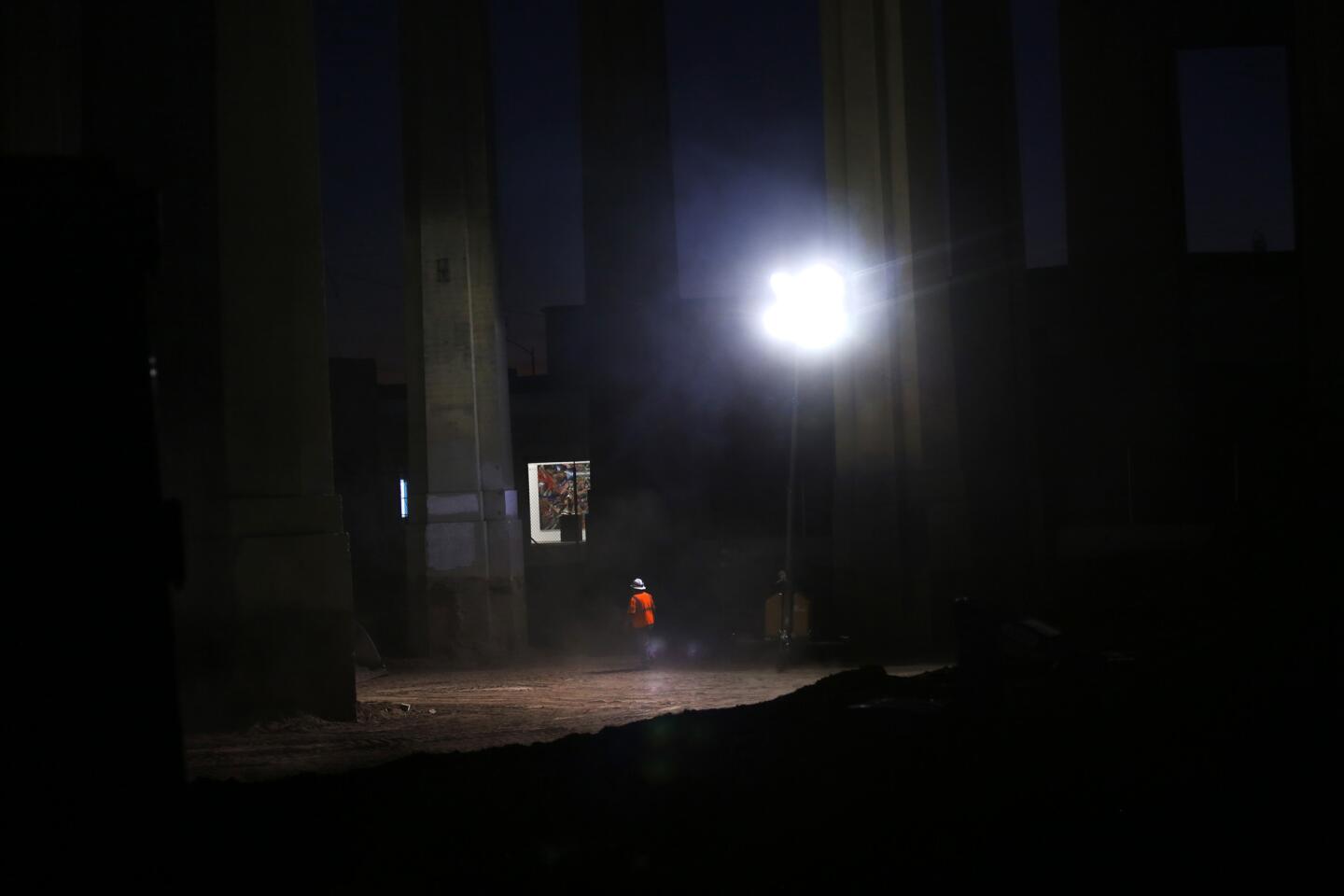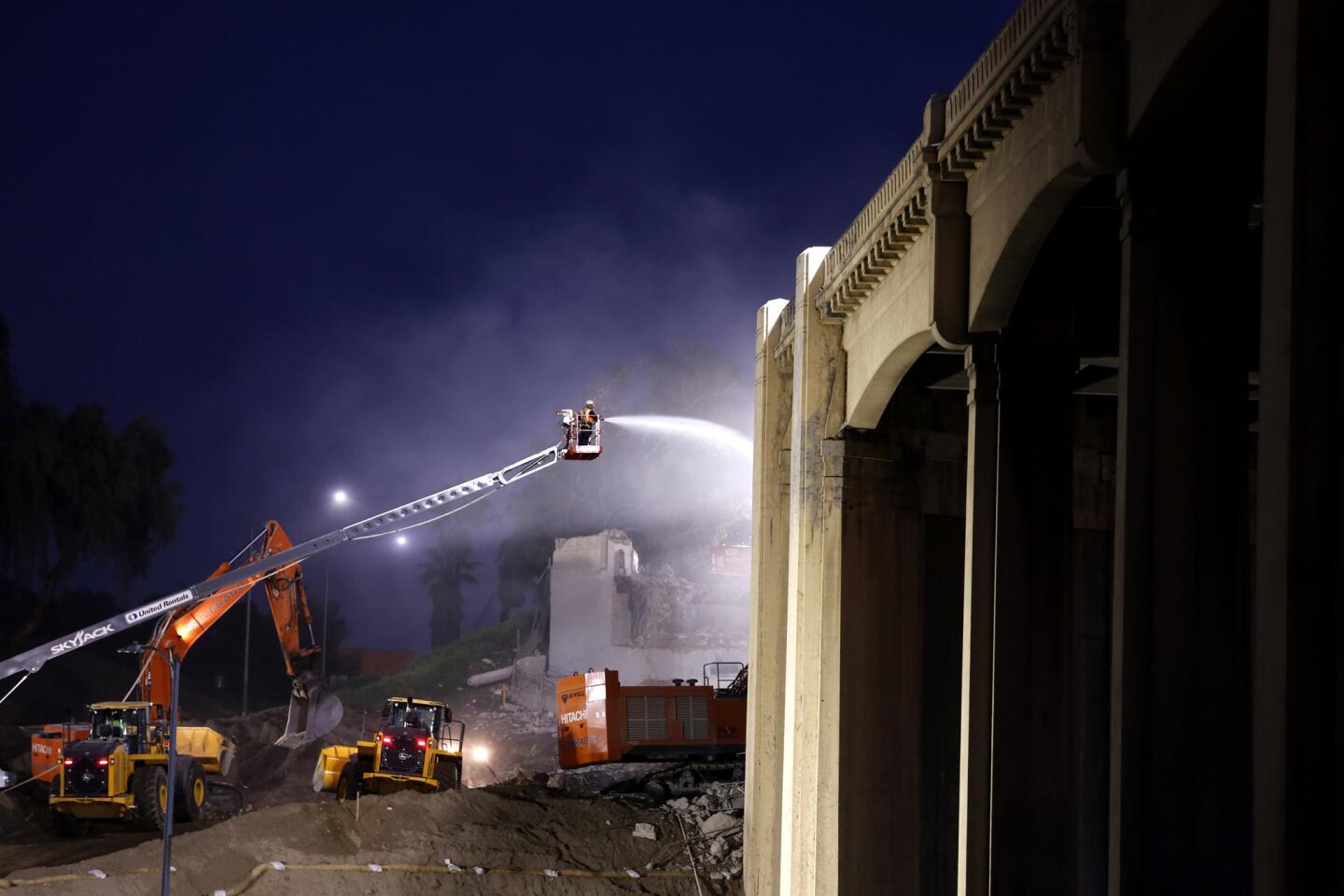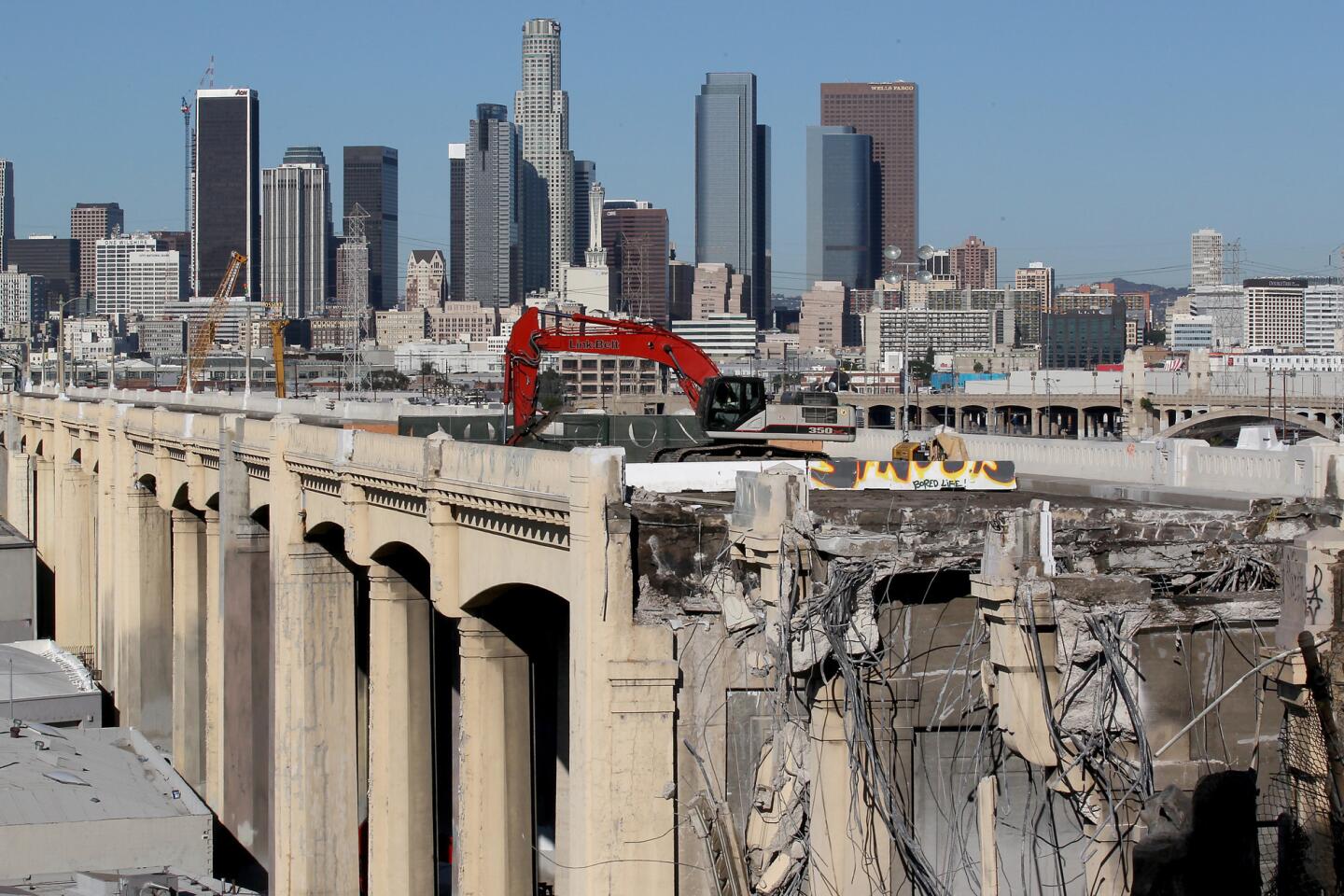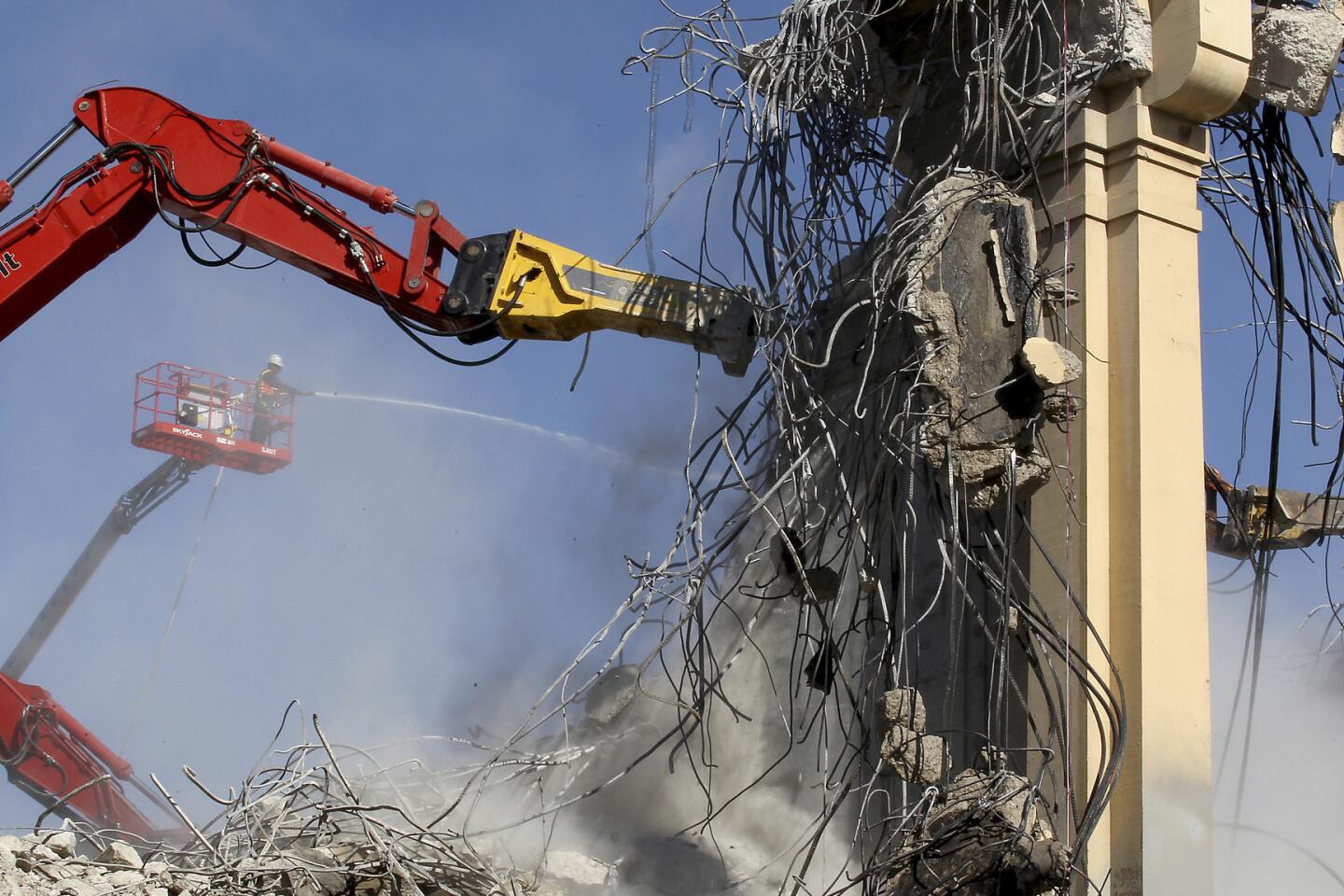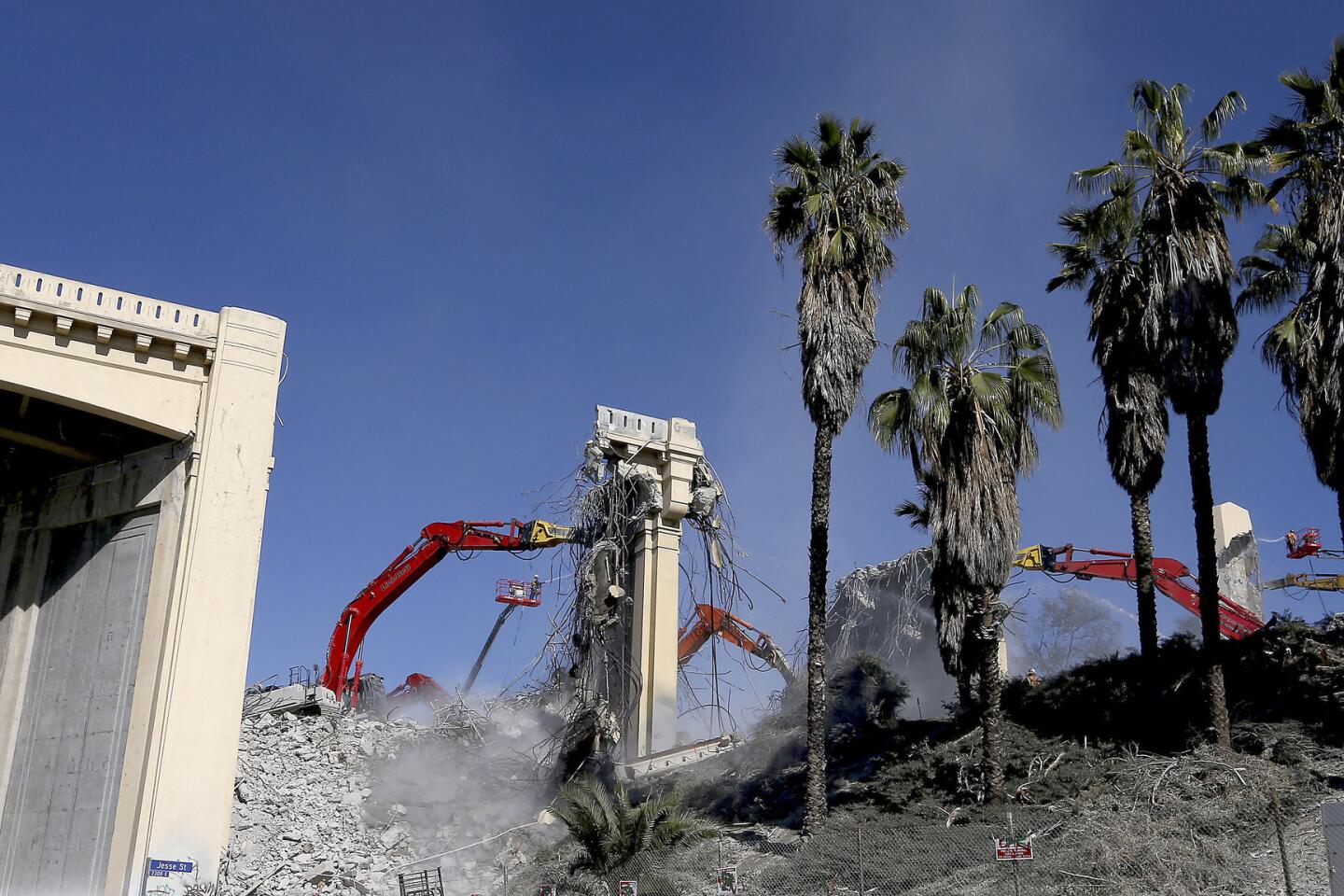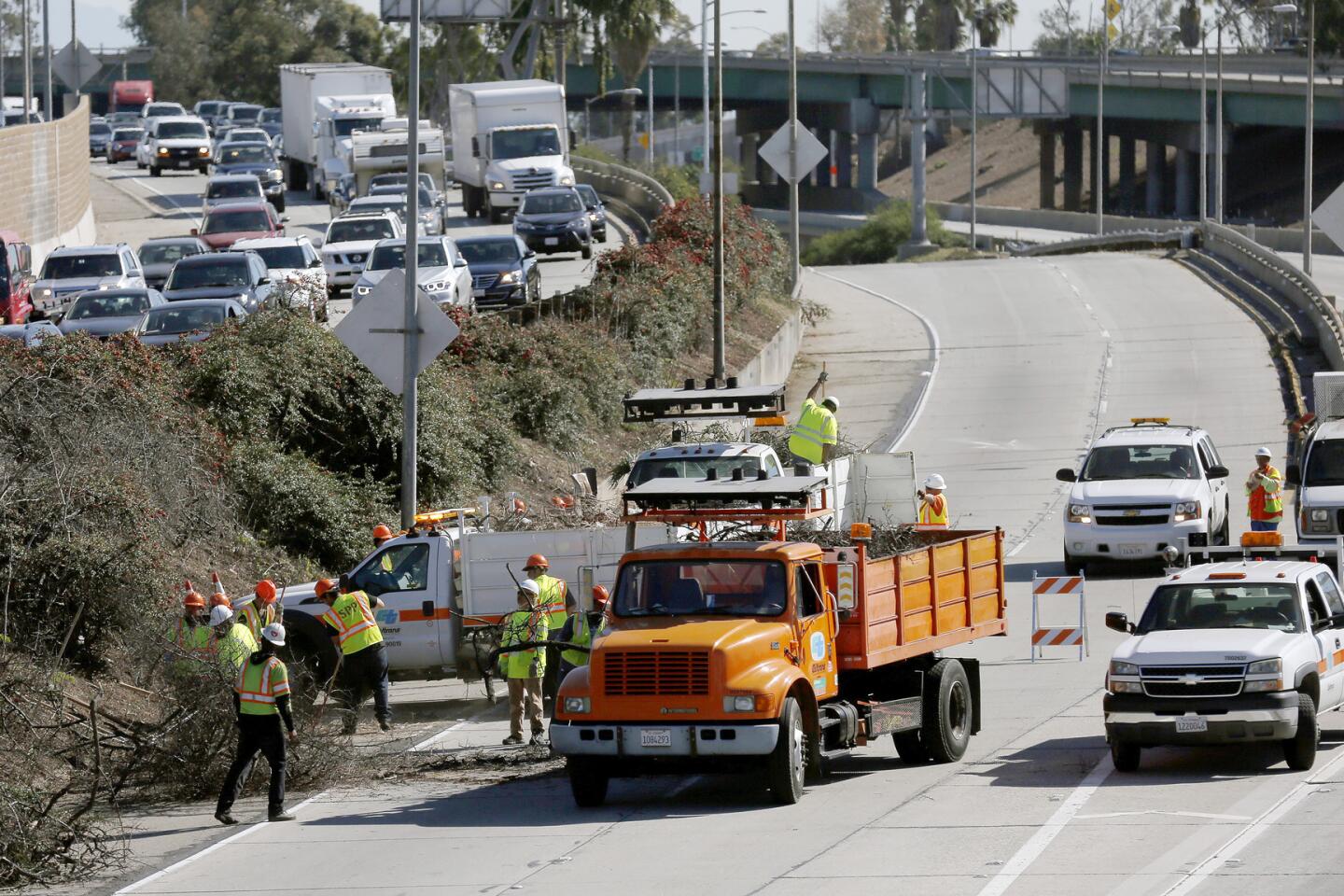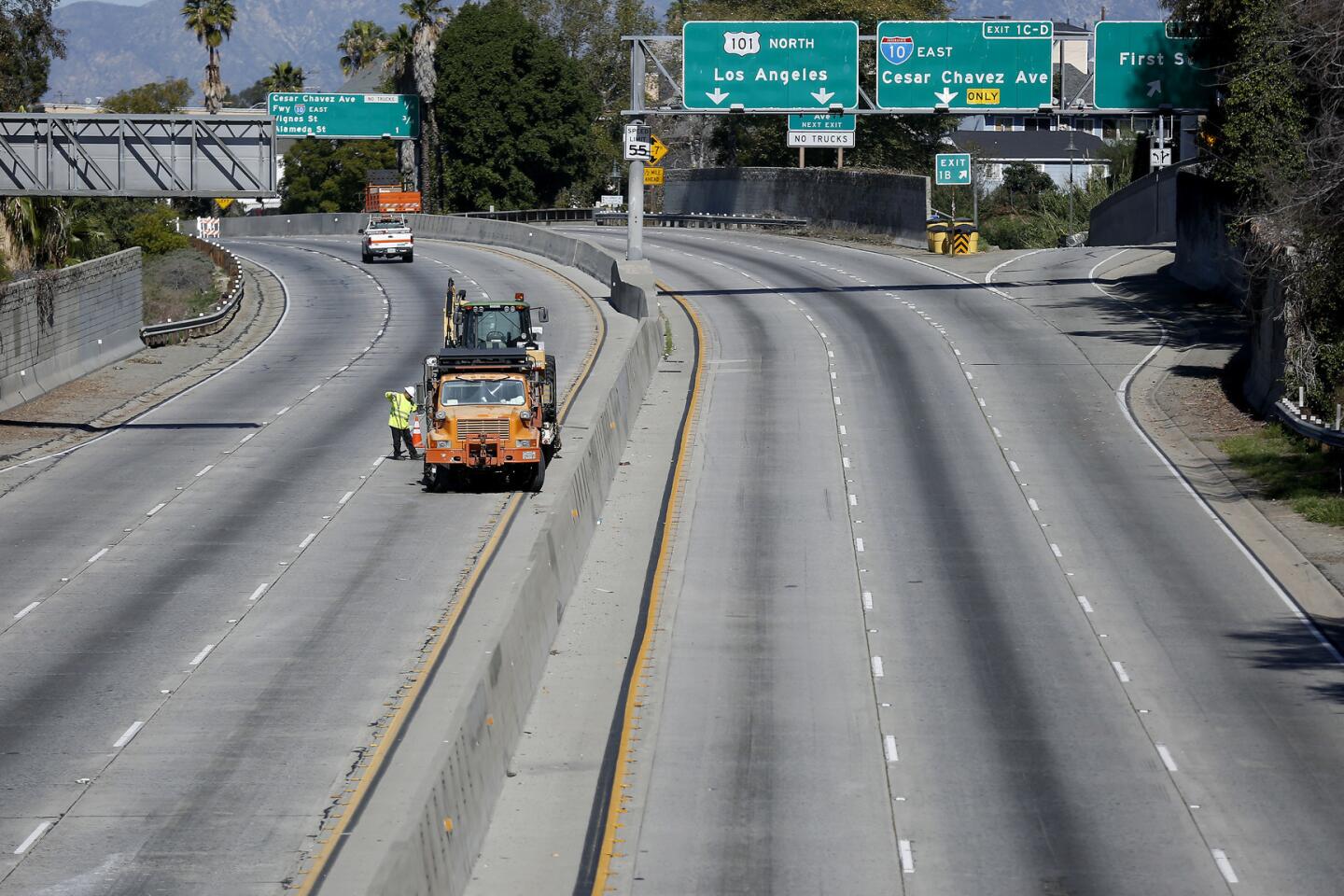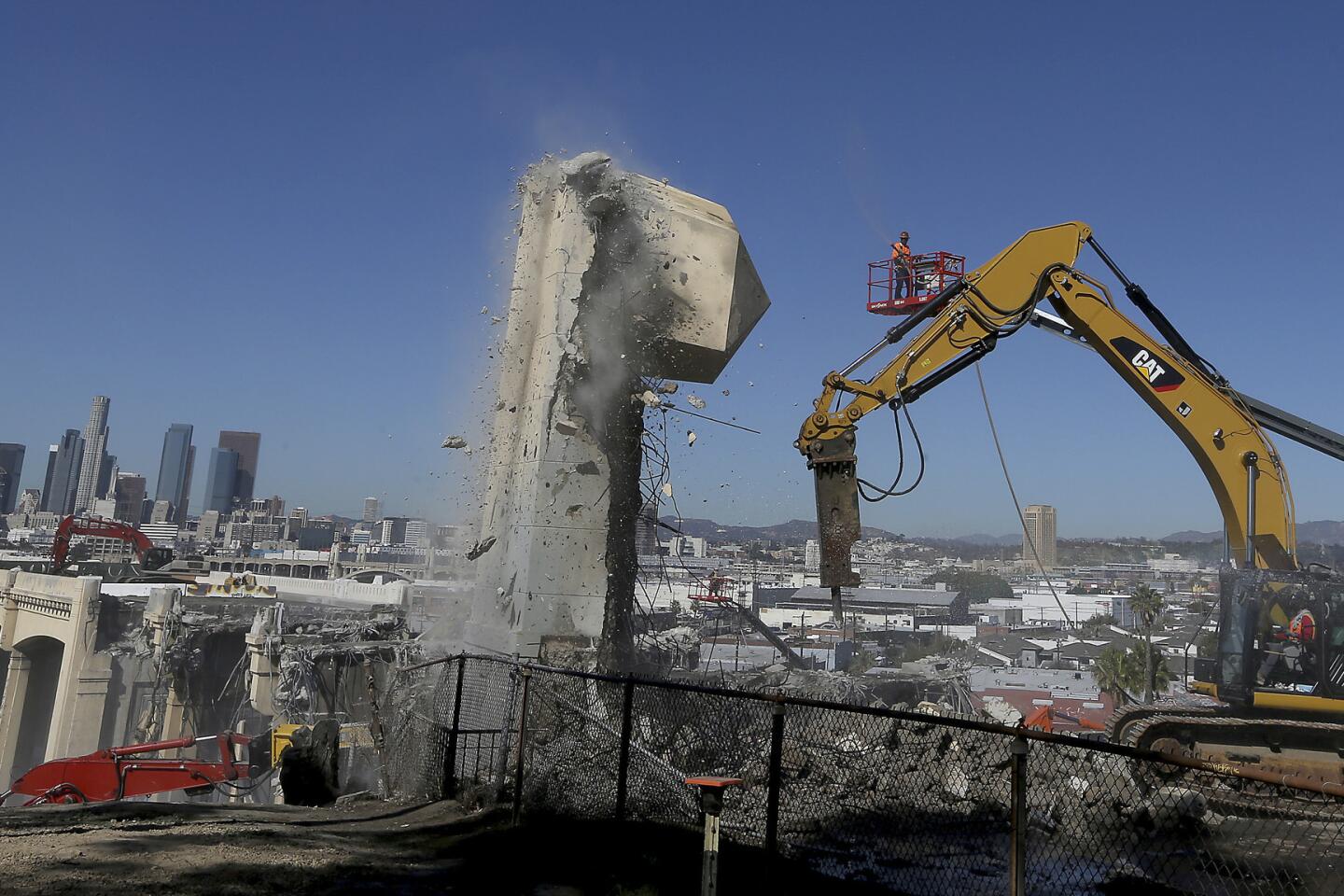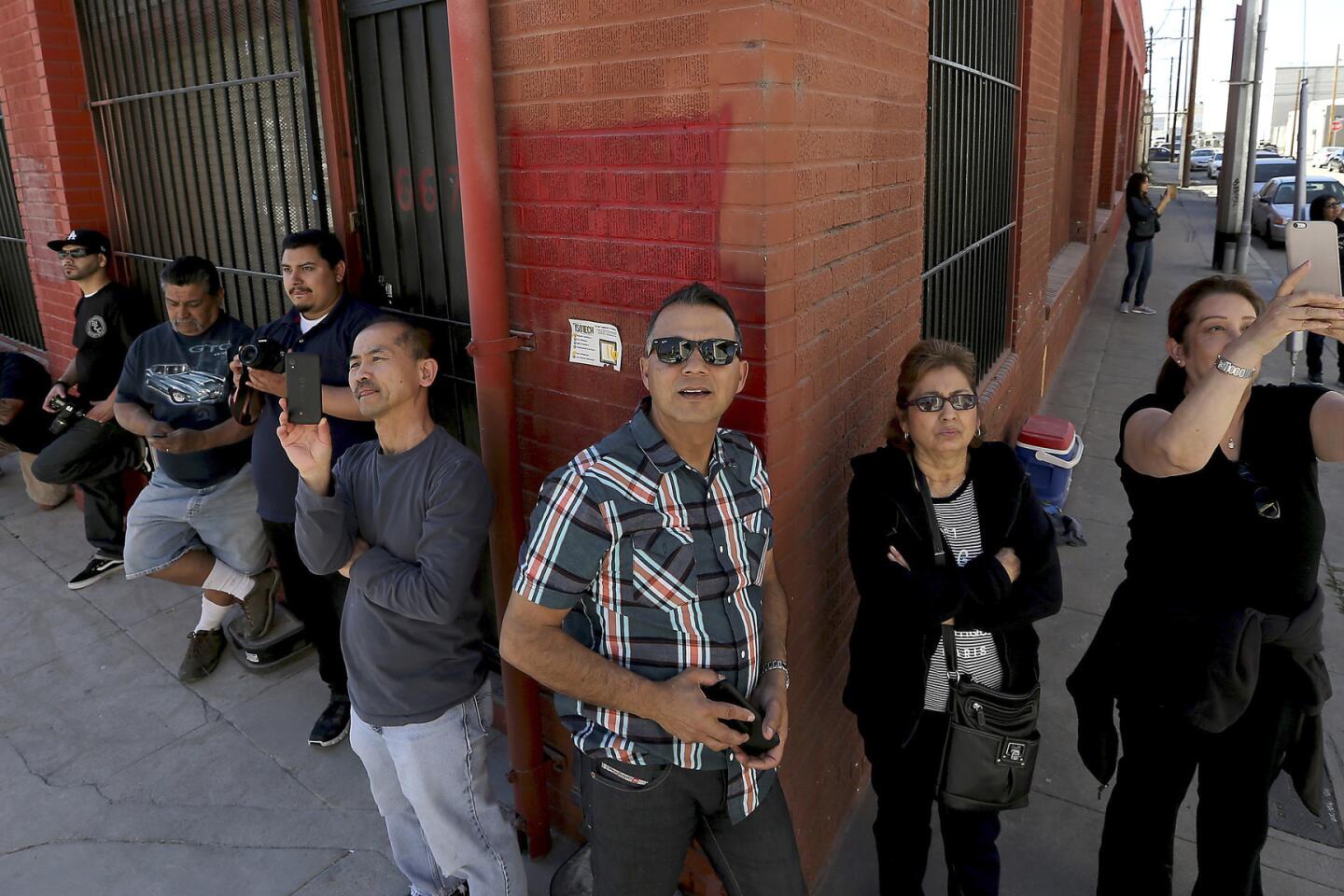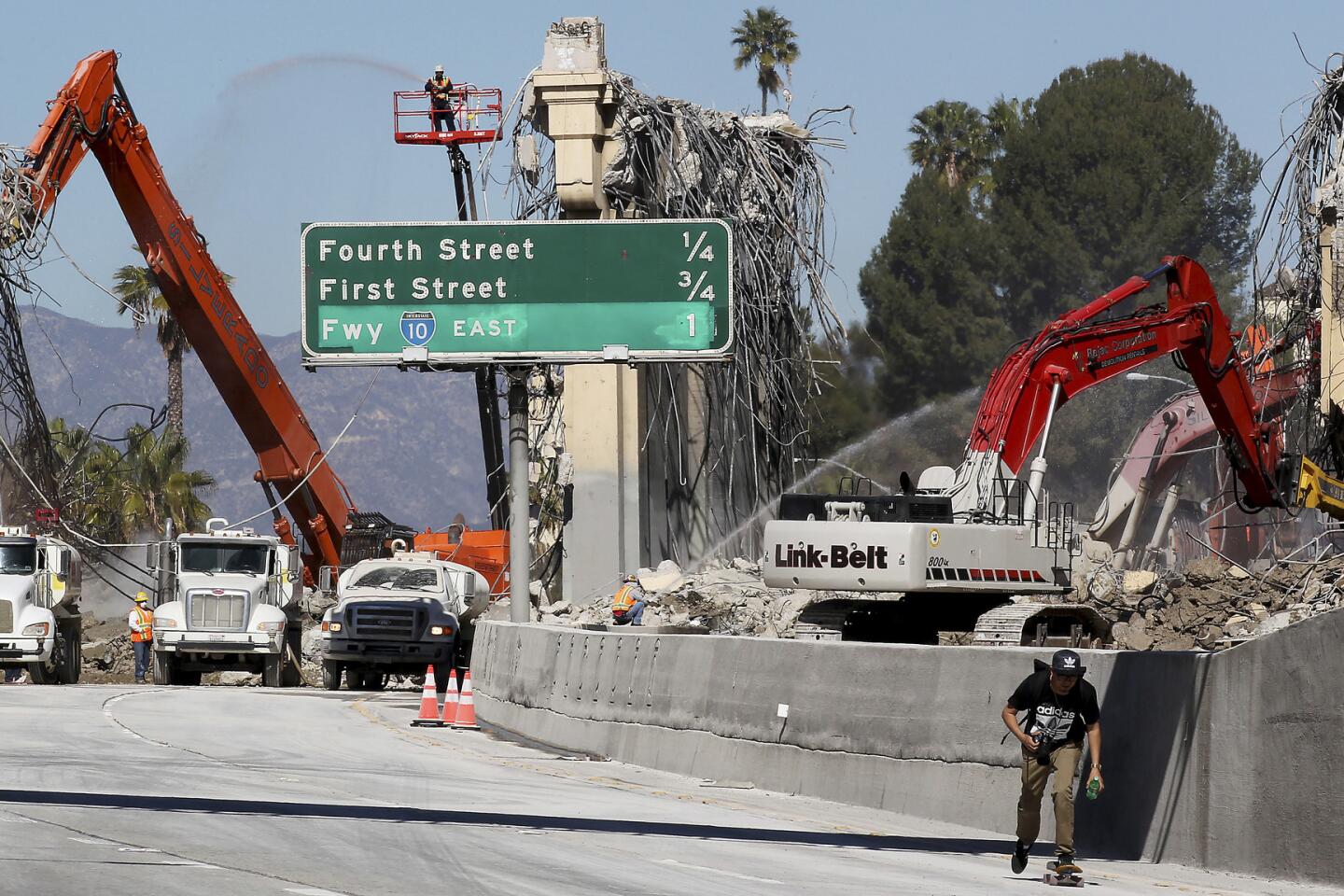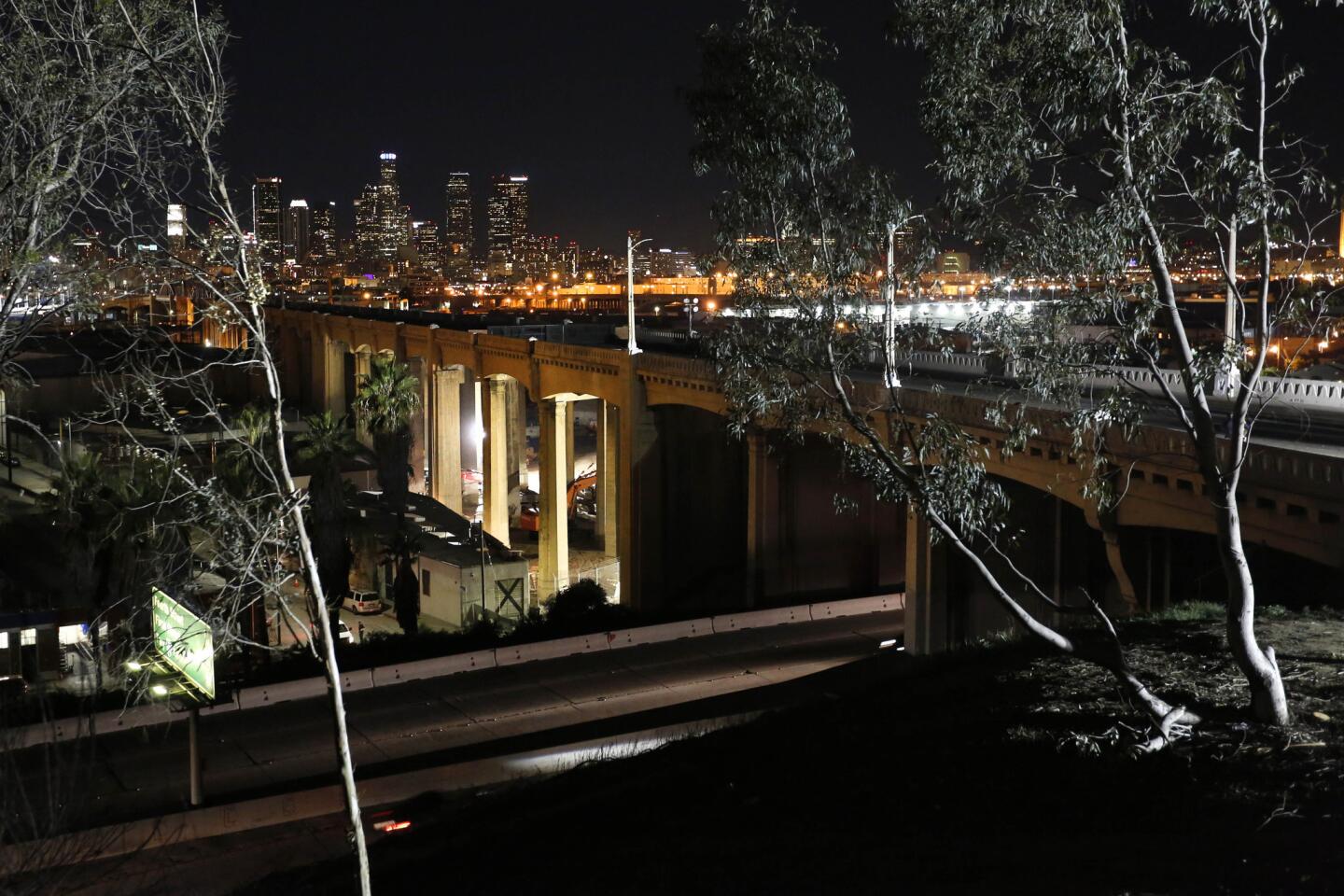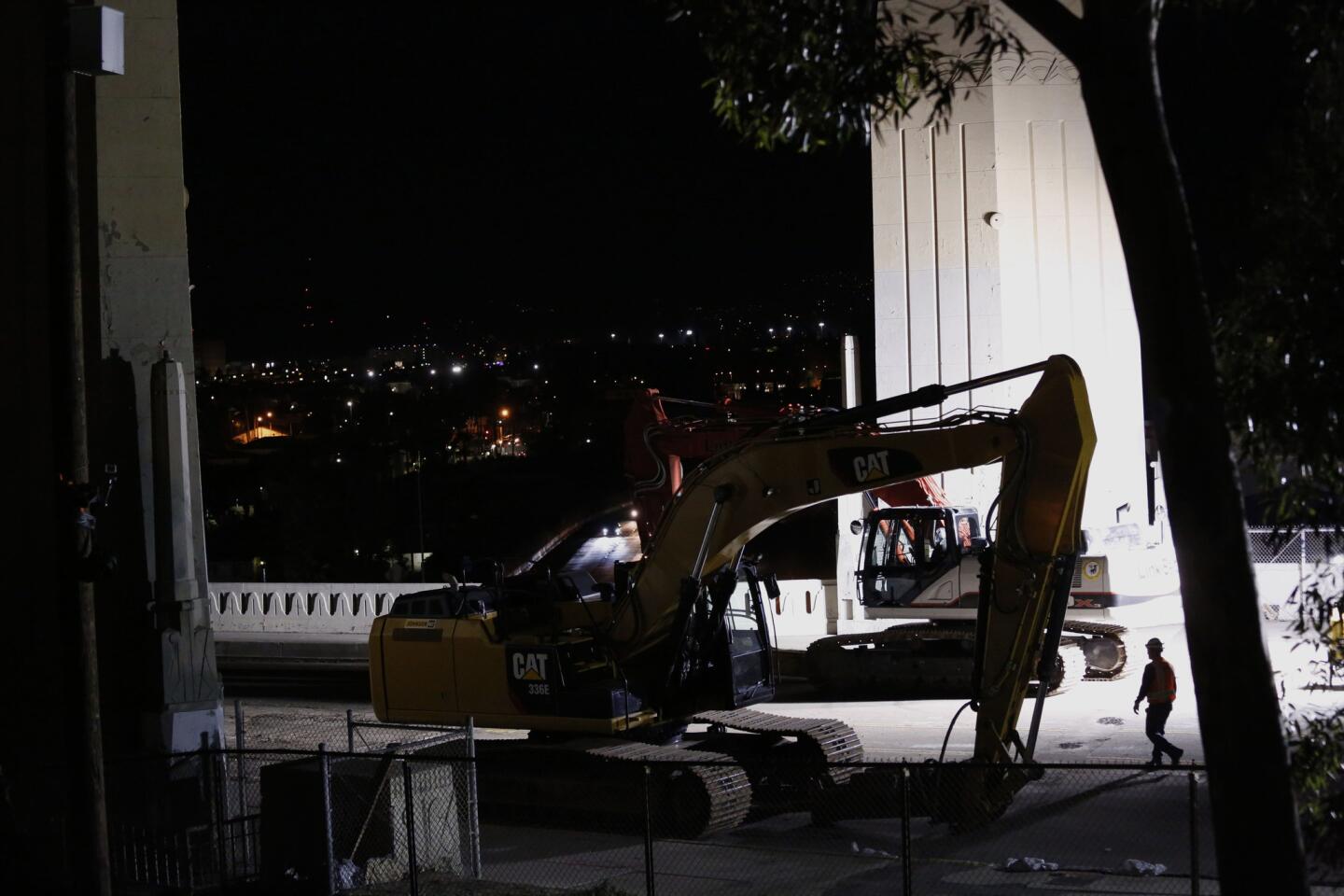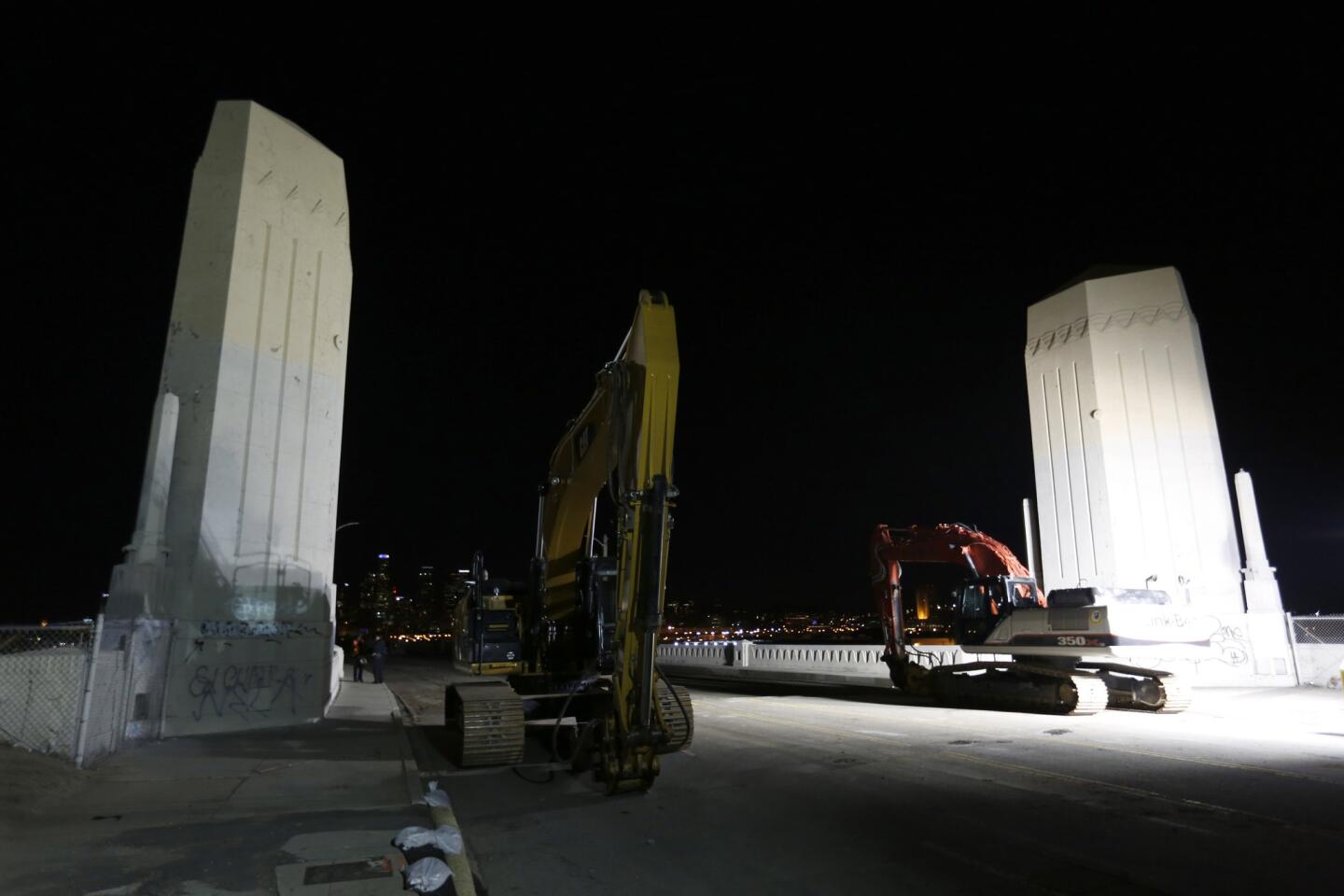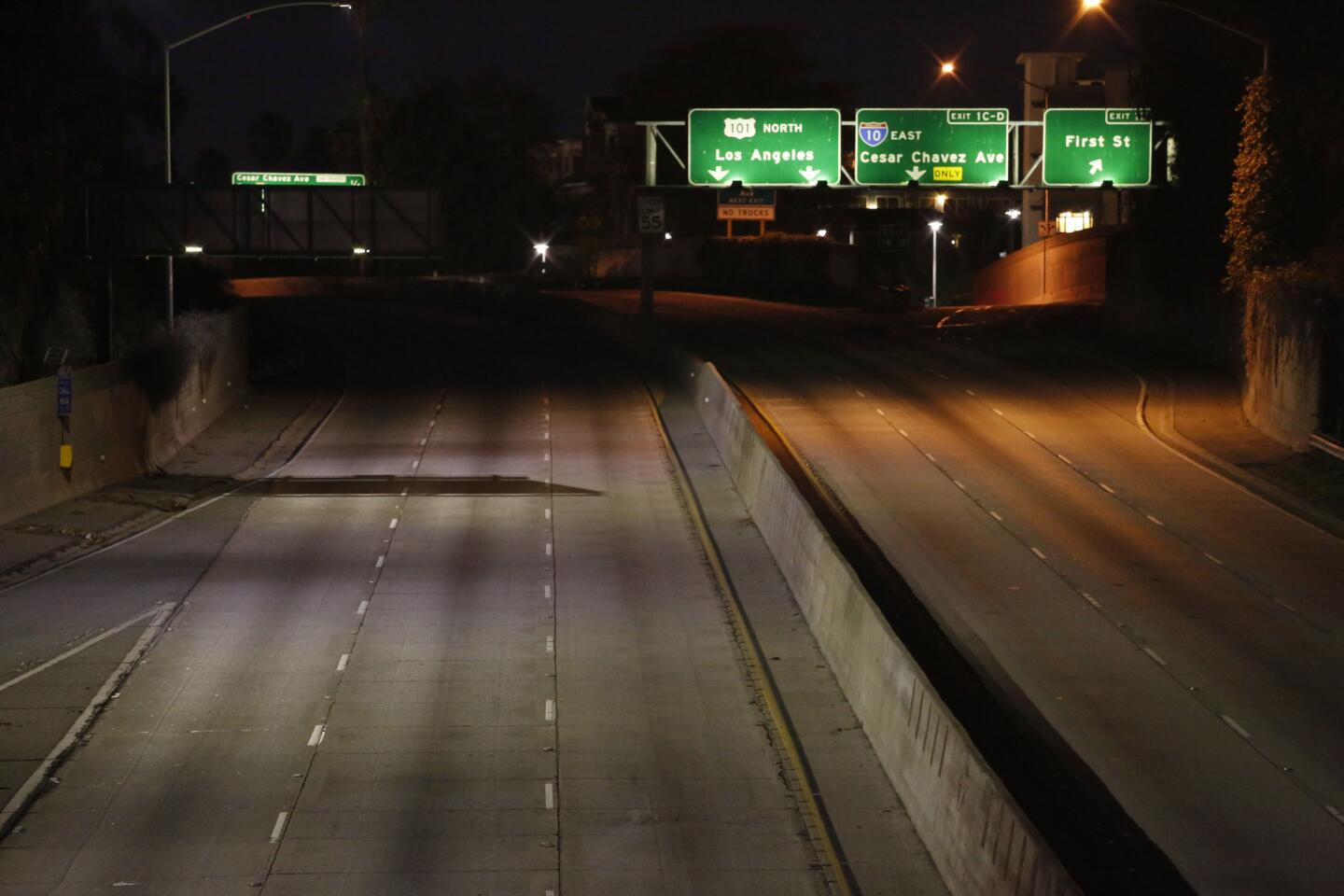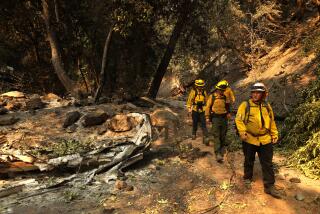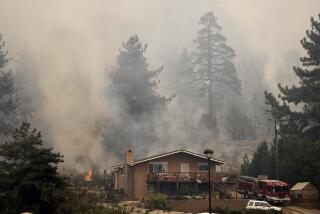6th Street Bridge, spanning much of L.A.’s past, finally starts to fall to demolition crews
The jackhammers pounded through the morning, debris cascaded in great chunks onto the freeway below, and threads of steel rebar hung from the pylons atop the 6th Street Bridge. With generous sunshine and immaculate skies, it was classic L.A. weather for a classic L.A. activity: the dismantling of another piece of the city’s past.
City engineer Gary Lee Moore stood admiring the 30-foot pylons Saturday morning, even as demolition crews attacked them. Regal-looking obelisks, they had framed the city for generations of motorists as they crossed west into downtown along Whittier Boulevard.
“What a view,” Moore said, raising his eyes to the soaring downtown Los Angeles skyline. “These pylons were the gateway to Los Angeles.”
Nearby, about a dozen officials in hard hats stood with their hands folded behind their waists, as if witnesses to a solemn ceremony. By noon, the first pylon was rubble.
The rest of the decrepit 3,500-foot bridge — built in the 1930s, a fixture of gritty charm in countless movies and TV shows — will be gone within nine months.
The 6th Street Bridge is not L.A.’s grandest or most picturesque. It rises over the concrete Los Angeles River as well as railroad tracks and several blocks of aging industrial tracts. Its concrete frame was crumbling and often marked by graffiti.
But the bridge was still beloved, serving as a connection between the skyscrapers of 6th Street in downtown to the west and the working-class Latino enclaves along Whittier Boulevard to the east. The night before the bridge closed for good a few weeks ago, scores of fans held a spirited impromptu wake, taking one last tour in classic cars, low-riders, motorcycles and bicycles, and on foot.
In its place will rise a sleek $428-million bridge, better suited to a gentrifying, forward-looking downtown. The steel-arched old bridge, deemed an earthquake hazard, looked like film noir; the undulating new bridge design, amiable to bikes and pedestrians, looks tailor-made for the hipster renaissance.
MORE: Get our best stories in your Facebook feed >>
Watching the demolition Saturday, Moore was excited to glimpse the layers of engineering history the jackhammers were exposing. Like the square rebar, woven into the arches and columns of the bridge. It was a rare sight, because bridge-builders use round rebar these days.
Moore was excited, too, about the new bridge, which has been called the Ribbon of Light and is expected to open in 2019. He recalled all the community meetings he had attended, at which people debated what the new span should look like.
“At the beginning, the community wanted a replica of the bridge,” Moore said. “We kept saying, ‘Give us a chance, give us a chance.’ We really want to deliver something special, something that speaks to the diversity of the community, the richness of the history.”
Apart from surviving earthquakes, the new bridge is supposed to deepen the connection between poor, largely Latino Boyle Heights and the revitalized downtown Arts District, where money and investment have been flowing.
Alicia Mercado, 70, has lived in Boyle heights for 30 years, just a few blocks from the bridge’s eastern end. She knew the structure was aging and often wondered whether it was dangerous as she rode over it on a bus.
Mercado was sad, however, to find out the demolition had begun. She sighed. “It’s all right,” she said with resignation. “It’s time to do something new. What’s old needs to be made new. This is part of becoming modern.”
She smiled as she recounted memories of the bridge, where her daughter — who dreamed of being a model — posed for photos as an 18-year-old. Mercado said those photos still hang all over her home. She rattled off Mexican movies that featured the bridge. “The good Mexican movies,” she said.
Jesse Munoz, 24, who lives within walking distance of the bridge, doesn’t have any emotional attachment to it but is impressed with the design for the new one, which includes a new park. “It’s going to look pretty cool,” he said. “It looks better. It’ll look more modernized.”
He does worry about the gentrification of his modestly priced neighborhood, where he lives in a rental home. Investors and developers have been coming by, checking the values, looking for investment properties, he said.
But maybe not all gentrification is bad, he said. “We can’t just live in the past all the time, or else there would be no future,” he said.
For the demolition crews, the task this weekend is to destroy 220 feet of the bridge stretching over the 101 Freeway, a 2.5-mile portion of which was closed Friday night and could reopen as early as 10 a.m. Sunday.
Workers had overlaid the freeway with 2 feet of soil so falling debris wouldn’t damage the roadway.
“As you can tell, there is no way to demolish this section of the bridge safely without shutting down the 101,” said Moore, the city engineer. He said no explosives will be used in the demolition.
From “Grease” and “Terminator 2” to “Lost” and “Them!,” the bridge — officially called the 6th Street Viaduct — has been a character in film and TV for decades. In October, hundreds of people gathered at a party to mark its closing.
Times staff writer Matt Stevens contributed to this report.
ALSO
L.A. developers accused of stealing millions in affordable-housing scheme
Winter gone? Temperatures nearing 90 degrees in Southern California with gusty winds
More to Read
Sign up for Essential California
The most important California stories and recommendations in your inbox every morning.
You may occasionally receive promotional content from the Los Angeles Times.
